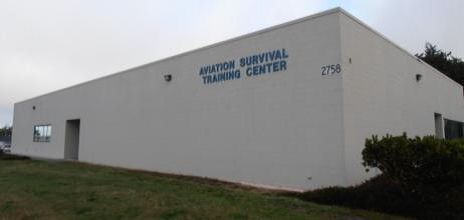Project Overview
Abraxas Energy Consulting conducted an energy assessment for the Aviation Survival Training Center Whidbey Island in Oak Harbor, Washington in August 2013. There are 2 buildings in the scope of this project at this facility: a 13,241 square foot physiology building and a 22,140 square foot operational training pool. The goal of the audit was to assist Whidbey Island in identifying and developing energy investment initiatives that achieved the federally required energy reductions.
The Solution
The energy assessment was performed in two phases, a Preliminary Assessment (Phase 1) and a Scoping Energy Assessment (Phase 2). Phase 1 consisted of a utility bill audit which established a baseline for energy and water usage and facilities benchmarking using energy Star Portfolio Manager. Twelve months of bills for water and gas, and electricity were used to conduct the audit. This generated a baseline for the energy/water/gas usage and utility costs, which was used in calculating potential energy savings. Calculated Energy Star scores were 64 for the physiology building and 9 for the training pool and the goal after implementation of conservation measures was to reach a score of 75. The calculated HDDs and CDDs provided insight to potential energy conservation measures.
The second phase used on-site visits with the purpose of identifying and quantifying cost-effective energy efficiency measures, water conservation practices and renewable energy measures. During the on-site inspection all the relevant information on the existing building conditions was collected. This on-site assessment included reviewing building and equipment data, interviewing site personnel, observing energy related equipment operation, and conducting some limited site measurements. Based on the inspection and calculations fifteen ECMs were recommended, as well as a list of administrative and operational measures that could be also implemented.
The Results
The largest opportunity for savings was found on installing a pool cover to prevent loss of heat during evaporation. Other ECMs found, affecting both or only one of the analyzed buildings, were increase of server room temperature setpoint, schedule of pool pump circulations, replacement of in-pool lights, installation of flow regulators on restroom faucets, reduction of compressed air pressure in the compressed air system used for air tools, control of the pool exhaust fan, lighting controls and upgrades, implementation of demand controlled ventilation, replacement of and old boiler with a condensing one, addition of VFDs to RTU fans and installation of synchronous belts on AHU fans. Studies were also conducted into the feasibility of co-generation, renewable energy sources and retro-commissioning. These were preliminary assessments and based on the results, co-generation and renewable energy sources were not found to be cost effective. A full re-commissioning of the hospital building was not recommended even though the measures identified during the feasibility study should be investigated further and implemented if found to be practical. The existing and proposed annual energy usage and cost for this project are shown below.
Benefits
When implemented, the ECMs will save over $26,583 per year with a simple payback of 3.5 years. The list of measures is prioritized by simple payback such that short-term investments are expected to be implemented first and longer term investments implemented last. Some interactive effects are accounted for in the calculation of energy savings such that if a different implementation sequence is followed the savings realized will vary to a degree. Total savings for electricity is 199,086 kWh/yr, for gas the savings is 7,847 Therm/yr, and for water savings is 21 MGal/yr. Total energy savings results in a 27% reduction in energy intensity. All values were evaluated using bin simulations and spreadsheet calculations based upon standard energy savings estimating methods and known and assumed operating conditions. Various incentives were identified through utility companies and various federal programs.
